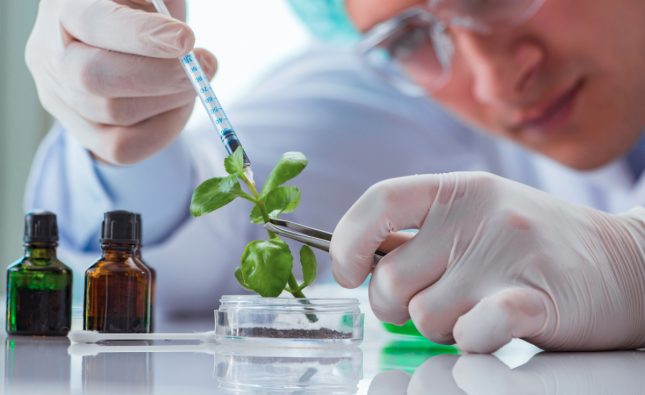
Agriculture has been an essential part of human life since the beginning of time. From seed to harvest, farming methods have evolved over the years, and we’ve come a long way from tilling land with our bare hands. Today’s farmers use advanced technology such as data analytics to produce food for the growing population. In this blog post, we’ll explore how data analytics is revolutionizing modern agriculture and shaping the future of farming.
The Agricultural Revolution
The agricultural revolution was a significant turning point in human history. It began about 10,000 years ago when humans started to cultivate crops and domesticate animals instead of relying on hunting and gathering for food.
This shift from a nomadic lifestyle to settled farming communities allowed humans to produce more food than they needed, leading to the growth of civilization. The agricultural revolution paved the way for modern agriculture practices that we see today by providing us with knowledge about soil fertility, crop rotation, irrigation systems and much more.
The ability to grow crops year-round led to increased population densities as people could stay put in one place rather than constantly moving around. This change also brought new challenges such as pests or diseases affecting crops, which farmers had never encountered before.
Despite these challenges, agriculture continued evolving over time through many other revolutions such as the Green Revolution and most recently -the Data Revolution.
The Green Revolution
The Green Revolution is considered one of the most significant events in agricultural history. It started in the 1940s and lasted until the late 1960s, during which time global food production increased dramatically.
The Green Revolution was characterized by an increase in crop yields through various agricultural technologies such as new seed varieties, chemical fertilizers, and pesticides. These technological advancements were particularly successful for crops like wheat and rice that are widely consumed across the world.
However, critics have pointed out that The Green Revolution had some negative environmental impacts. For instance, excessive use of chemical fertilizers caused soil degradation over time. Also, monoculture practices led to a reduction in biodiversity.
Despite its drawbacks, The Green Revolution was essential to feeding a growing population at the time. Today’s agriculture industry has evolved from its legacy while still relying on many of its fundamental principles to produce healthy food for billions of people worldwide.
The Data Revolution
The Data Revolution in agriculture is essentially the application of data analytics and technology to farming. It has enabled farmers to make informed decisions by providing them with real-time, accurate information on everything from weather patterns to soil health.
With the advent of precision agriculture techniques, farmers can now use sensors, drones and other devices to collect vast amounts of data about their crops. This data can then be analyzed using machine learning algorithms that help identify patterns and trends over time. Farmers can use this information to determine exactly when they need to water or fertilize their fields, thereby maximizing yields while minimizing input costs.
Furthermore, the Data Revolution has also led to advancements in crop breeding programs that leverage genomics technologies such as gene editing tools like CRISPR/Cas9 which are used for genetic manipulation in plants.
Additionally, the integration of Internet-of-Things (IoT) devices into agricultural practices allow farmers access critical information regarding pests and disease outbreaks affecting a particular region helping them respond promptly.
It’s clear that The Data Revolution is transforming modern agriculture as we know it – improving efficiency while reducing waste through smarter decision-making processes.
How Data Analytics is Being Used in Agriculture Today
Data analytics is being used to revolutionize agriculture by providing farmers with real-time insights into their crops and soil. With the help of sensors, IoT devices, drones, and other technologies, data can be collected on a continuous basis to monitor various aspects of farming operations.
One example of how data analytics is being used in agriculture today is precision farming. Farmers can use data gathered from sensors placed throughout their fields to make more informed decisions about planting patterns and fertilization rates. This helps maximize crop yield while minimizing waste.
Data analytics also plays a crucial role in predicting weather patterns and natural disasters that could impact crops. By analyzing historical weather patterns alongside current climate conditions, farmers can take proactive measures to protect their crops from damage caused by extreme temperatures or storms.
In addition to these uses, data analytics is also being employed in animal husbandry practices. Sensors worn by livestock are able to track vital signs such as heart rate and temperature as well as monitor feeding habits. By collecting this information over time, farmers are better equipped to detect early signs of illness or injury among their herd.
The use of data analytics in agriculture continues to evolve and expand with new technological advancements paving the way for even more innovative solutions aimed at improving efficiency and sustainability within the industry.
Case Studies
Case studies are shining examples of how data analytics is transforming modern agriculture. One such case study is the use of drones to monitor crop growth and health. By capturing high-resolution images, drones can quickly identify areas where crops are struggling due to pests or disease, allowing farmers to take targeted action.
Another case study involves using sensors and data analysis to optimize irrigation systems. This technology allows farmers to monitor soil moisture levels in real-time, ensuring that crops receive just the right amount of water at all times. As a result, water usage is reduced while crop yield increases.
Data analytics has also been used effectively in livestock farming. For example, wearable devices can track animal health indicators such as heart rate and temperature, allowing for early detection of illness or injury. This helps farmers provide timely treatment and prevent potential outbreaks.
These case studies demonstrate how data analytics is revolutionizing agriculture by enabling more efficient use of resources and better decision-making based on accurate insights from big data sets.
The Future of Agriculture
As we move forward, data analytics will continue to revolutionize modern agriculture. With the help of big data and intelligent algorithms, farmers can make more informed decisions about crop yields, soil management, and harvest predictions. The future of agriculture is bright with opportunities for innovation in machine learning models that predict when crops need water or fertilizer and drones that survey fields remotely.
By leveraging advanced technologies such as Internet of Things (IoT) sensors, remote sensing techniques like satellite imagery combined with AI-powered analysis software tools would enable easy monitoring of critical variables such as temperature levels in greenhouses, soil conditions in farms etc. Farmers will be able to track these variables on a real-time basis and get insights they need to optimize their operations.
It’s clear that the integration of data analytics into modern farming practices has transformed agriculture from traditional farming methods to a high-tech industry. By continuing to embrace technological advancements in this field – from smart machinery and IoT devices connected via 5G networks enabling farmers access large amounts of data anytime anywhere- we are sure to see an even greater transformation in how our food is grown and harvested for many years to come!










